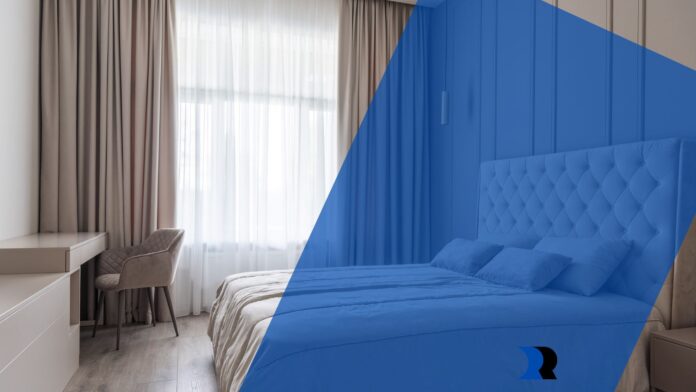As condominiums and home proprietors have a growing quantity of out-of-door space to work with, it’s come to be a top priority to make the most of their residing spaces. Patios, decks, and balconies all provide precious square footage for leisure, leisure, and taking part in the surroundings. However, in crowded or urban areas, these spaces don’t usually afford us the seclusion they seek. Outdoor Privacy screens and curtains allow a more private and intimate outdoor setting and can provide practical and decorative solutions.
Recognizing the Significance of Outdoor Privacy
Understanding the importance of outdoor privacy is necessary before exploring the several solutions available. Beyond only keeping prying eyes out, privacy screens and drapes have other uses. Your outside area may feel more intimate and like an extension of your house thanks to them. Furthermore, they can offer defense against the sun and wind, improving the comfort and usability of your outdoor space in all seasons.
Additionally, privacy options can help you create discrete zones for dining, relaxing, or gardening inside your outside space. This spatial definition may give even tiny outdoor spaces a sense of organization and purpose.
Natural Materials to Create a Rustic Appearance
Privacy screens composed of bamboo, reed, or willow are a great choice for people who like a more organic, natural appearance. In outdoor settings, these materials fit in perfectly, producing a peaceful and pleasant ambiance. The longevity and weather resistance of bamboo screens in particular are well-known. They are readily installable and available in a range of widths and heights to accommodate different areas.
Another timeless option that never goes out of style is wood screens. Because of its inherent resistance to insects and deterioration, cedar and redwood are attractive choices. Staining these to match your patio furniture or leaving them natural will allow them to weather gracefully over time. From straightforward vertical slats to more complex lattice patterns, wooden screens come in a variety of forms that let you strike the ideal balance between airflow and seclusion.
Modern Materials for Spaces of Today
Choose screens made of acrylic or polycarbonate for a genuinely contemporary appearance. Different levels of seclusion are possible with these materials, which can be opaque, translucent, or transparent while permitting light to pass through. They can be personalized with frosted motifs or patterns for extra visual appeal, and they come in a variety of colors.
Picking the Proper Fabric
The appropriate fabric choice is essential for good outdoor curtains. For materials that are resistant to weather damage, mildew, and fading, look for ones made especially for outdoor usage. Because of its many color possibilities and durability, sunbrella fabric is a popular choice. Other appropriate fabrics are treated cotton and mixtures of polyester.

Think about a fabric’s aesthetic qualities as well as its practicality. Though they may be more difficult to handle in windy weather, heavier textiles will offer greater privacy and wind protection. Although lighter materials may provide less privacy, they will permit more airflow and filtered light.
Setting Up and Hardware
To work well and endure outdoor circumstances, outdoor curtains must be installed properly. Various options are available for hanging curtains outside, based on your demands and available space.
Outdoor-specific curtain rods are a popular option. Pergolas, walls, or even freestanding pillars can support these. Seek out rods composed of materials that can withstand weather, including stainless steel or aluminum.
Wire cable systems are a more adaptable option. These are easily adjustable or detachable as needed, and they let you drape greater areas. In spaces with irregular shapes or where permanent fixtures are impractical, they are very helpful.
Putting Your Outdoor Curtains in Style
You may style your environment in countless ways with outdoor curtains. Consider sheer white curtains that sway in the wind for a light, beachy atmosphere. Using striking colors or patterns that go well with your outdoor furniture and accessories will create a more dramatic effect.
Curtain layering can have practical as well as decorative advantages. Use a lighter, ornamental curtain for extra flair and a heavier, more opaque curtain for seclusion and sun protection. This method also lets you change the amount of light filtration and privacy you want.
Combining Curtains and Screens to Provide the Most Flexibility
Consider combining curtains and privacy screens in your outdoor area to get the best of both worlds. For added flexibility and style, use curtains after using screens to establish a permanent framework and a minimal degree of privacy.

This combined method is especially effective in regions with many zones or larger outdoor spaces. To create a cozier, more intimate atmosphere, you could, for instance, employ a privacy screen to divide your outdoor dining space from the rest of the yard and then drape a sofa area.
Upkeep and attention
The longevity of your outdoor privacy solutions depends on regular maintenance. Frequent cleaning and the occasional staining or sealing can help shield natural material screens from the weather. Although they usually need less upkeep, synthetic materials should nevertheless be cleaned occasionally to avoid dirt and particle accumulation.
At least once a season, you should remove and clean your outside curtains as directed by the manufacturer. A lot of outdoor textiles are machine washable, which makes upkeep quite easy.
Conclusion
If you think your outdoor living space is lacking privacy, drapes and outdoor privacy screen are a cheap yet highly effective improvement. If you make your space more private and cozy, you’ll probably spend more time outside reading a book, having friends over for a cookout, or just waiting for that quiet morning coffee. You can design a bespoke solution that is ideal for your particular location by combining several alternatives.


